SOME OF THE MOST BEAUTIFUL VILLAGES OF GASCONY-GERS
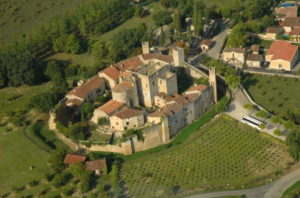
The traditional name of Gascony nowadays refers to modern-day French departments of the Gers, the Landes and the Hautes Pyrénées. To the west, it’s bordered by the Atlantic ocean and to the south by the Spanish border. The name ‘Gascony’ conjures up a rich agricultural area, warmth, sunshine and a traditional rural way of life. It’s one of the great gourmet regions of France and produces some of the country’s finest wines. There are fortified villages, sections of the pilgrimage route to Santiago de Compostela, and home to the story of d’Artagnan and the Three Musketeers.
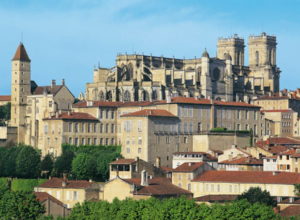
From a convenient base such as Montauban, many of the small towns and villages are within easy reach for a day’s visit. Another good starting point is Auch, the departmental capital of the Gers. It’s an ancient town whose numerous attractions include the Renaissance cathedral of Sainte-Marie in the upper town, which has a fine 16th century organ and impressive stained glass windows.

Next to it stand the Tour d’Armagnac, a 14th century prison, and a statue of d’Artagnan. Although Alexander Dumas fictionalised the character d’Artagnan, he was nevertheless based on the real-life Comte d’Artagnan, Charles de Batz.
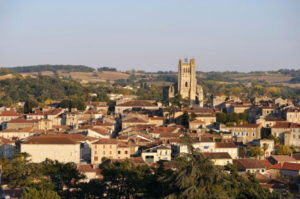
One of the most delightful small towns of the region is Condom, about 1 l/2 hours drive from Montauban. The town’s name always provokes sniggers and much amusement from native English-speaking visitors, for obvious reasons. This reaction mystifies the French, since the word, other than as the name of this charming town, is meaningless to them!
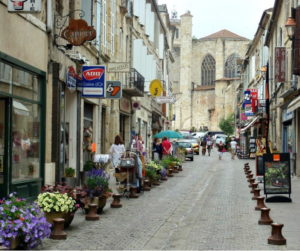
Condom was once an important stop on the pilgrimage path to Santiago de Compostela, around which the town developed. Its wealth also came from the export of Armagnac. It’s now a quiet rural market town with an imposing cathedral and quaint medieval streets in and around Place du Lion d’Or, and some grand 18th century townhouses.
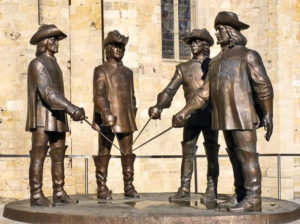
There’s also an impressive group statue adjacent to the cathedral of d’Antagnan and the other Musketeers. Market day is Wednesday.
To narrow down the field of the many must-see villages, the best place to start is with some of those that have achieved designation as one of the Plus Beaux Villages de France.
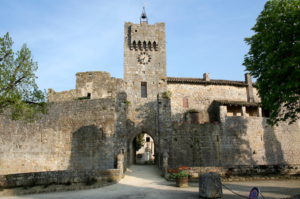
Five kilometres from Condom is Larressingle, the smallest fortified town in France—it takes only about 5 minutes to walk around, unless you choose to linger. The heavily fortified walls that surround the village date from the 13th century are almost completely intact. Entry into the village is by the only gate through the fortifications, across a pretty little double-arched stone bridge that once had a drawbridge across the moat.
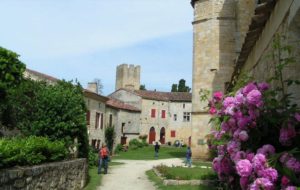
On arrival, it’s an impressive sight. The village was the medieval home to the bishops from Condom, and within the walls there is a small, fortified Romanesque church. There’s also a small chateau, mostly in ruins and dominated by its donjon. From March to November, just outside the village, a fascinating recreation of a medieval siege camp is set up as an outdoor hands-on siege-machines museum. Each year, there’s a medieval festival staged on the third weekend in July.
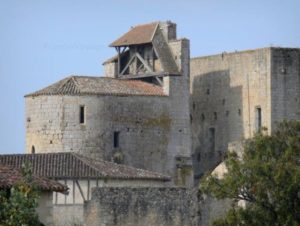
It’s easy to see why this is the most-visited destination in the Gers.
Fourcés and Montréal-du-Gers are also nearby and both are classified as ‘Plus Beaux Villages’
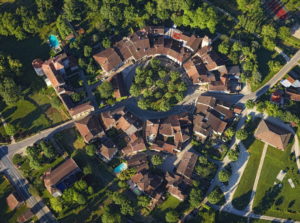
The fortified village of Fourcés (meaning ‘planted with trees’) is situated at the northern edge of the Gers. This little jewel is very unusual in that it is in the round, unlike almost all other bastides which follow a strict grid pattern. The central square is ringed with beautiful buildings with sheltered arcades below, housing a café and restaurant, craft and antique shops. Some are constructed in colombage—half-timbered—while others have been built in stone, the most impressive of them being the Mairie.
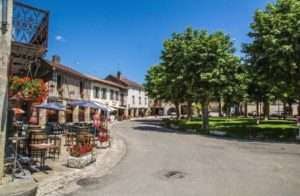
The square is planted with lovely Plane trees that provide welcome shade in the summer. At the other end of the village is an attractive 13th century stone clock tower above one of the original gateways into the village. From here, next to the river Auzoue, you can see the castle, which has been converted into a hotel and restaurant. A huge flower festival is held in Fourcés in April, with the town looking its best, making that a lovely time to visit.
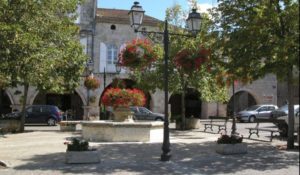
Montréal-du-Gers is about 7kms. from Fourcés, and regarded as probably the oldest bastide in Gascony/Gers. Built on a promontory below the Auzoue, it was founded in 1255 by the Count of Toulouse, and constructed on the traditional grid plan, with its roads leading to the central square with its arcades and half-timbered houses.
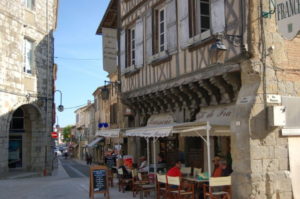
There is a 13th century Gothic church built into the fortifications. A popular drawcard for archaeology enthusiasts, ruins dating from 2nd – 5th century were uncovered in 1959 which revealed an underground heating system, sumptuous thermal baths and pool, and some surprisingly complete mosaics. Archaeological finds can be seen in the town’s Tourist Office.
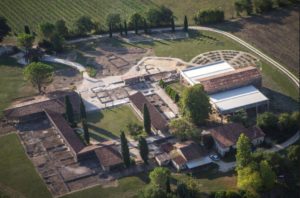
Just five minutes away from Montréal-du-Gers, on the outskirts of the village of Séviac, is the archaeological site of a luxurious 4th century CE Gallo-Roman Villa, , which is an integral part of the archaeological complex of Elusa Ancient Capital, which consists of three exceptional sites. In a setting of vineyards and cypresses, the remains at Séviac have been extensively excavated to reveal an enormous, villa complex extending over 6,500 sq.m. Its beautiful mosaics—the largest in France—occupy over 625 sq.m.
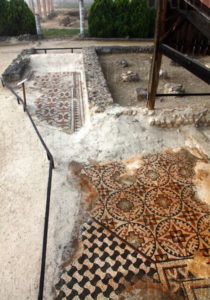
Typical of wealthy landholders of the time, there’s a huge thermal area which extend over 500 sq.m., with its impressive marble pool and mosaics still visible today. Most of the artefacts recovered from the site are on display in the Tourist Office at Montréal. Note that in winter the site is closed and the mosaics covered with sand.
Situated on one of the pilgrimage routes to Santiago di Compostela is La Romieu another ‘Plus Beau Village’, and UNESCO World Heritage Site. A very small village with a population of about 500, that aside from being very picturesque, is known for its cats.
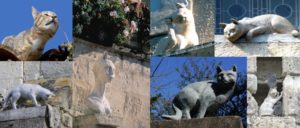
They sun themselves on window sills and ledges, or peer out from windows. These are stone cats, the work of a local sculptor, Maurice Serreau. They commemorate a local legend, dating from 1338, about a young local girl named Angeline whose cats saved the village from a plague of rats which had overrun the town and ravaged the crops.
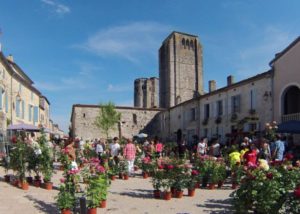
The village has a lovely arcaded square and renowned for its magnificent Collegiale St Pierre, a 14th century cloister and two towers, one of which has an architectural treasure: a double staircase, thought to have been built to facilitate escape in case of invasion—a not uncommon occurrence during those turbulent times.
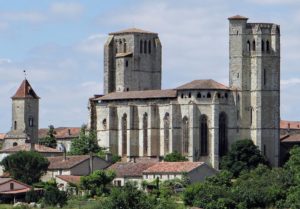
Not far from the College are the gardens of Coursiana, a great private botanical park, open to visitors, that has an arboretum, an English garden, a garden of medicinal plants, aromatics and spices and a vegetable garden.
There is so much to explore and discover in this beautiful region of France, and those mentioned here are just a tiny sample of what is waiting to delight the senses in this land of good food and good living.
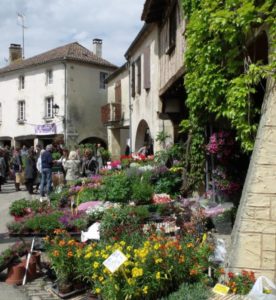


A fascinating read – a totally unknown area for me.
Hi Nadine,
So glad you enjoyed reading it. It’s such a rewarding area and one that too few Australians know about, which is hard to believe! It’s got everything one wants as a visitor: gorgeous countryside and villages, incredible food and wine plus a fascinating history…I’m on a mission to make it better known!
Well done Cheryl/Graham, another fascinating “travelogue”. It really makes us feel as if we have visited it with you. Keep them coming!
Hi Annette and Tony,
How lovely to hear from you, and especially your kind words about the Blog. I’m so glad you enjoy reading them. This particular area is so little known by Australians, and probably most other visitors too I suspect, which is such a shame as it has everything one wants in a destination: gorgeous rural scenery, incredible food and wine, fascinating little bastide villages all over the place, delightful towns…what’s not to like!?
Wow Cheryl , so tempting it looks an amazing area , very intriguing thanks for that , Carole Fitzgerald
You’re so right Carole, it is one of the most beautiful regions in France. We’ll head back that way one day soon as there’s so much we never managed to see!
Cheers, Cheryl
Great read – we are currently planning to visit – thank you very much !
Hi Luisa,
So many beautiful places of interest to visit in that region. Hope you allow lots of time to take it all in at a leisurely pace!
I’m sure you’ll love it.
Cheers, Cheryl